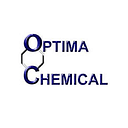The Importance of ALD in Batteries
Atomic Layer Deposition is a technique that has gained much interest as a means of creating nanosized coatings and nanosized thin films on different substrates. In ALD, vapor phase precursors are sequentially and separately introduced to a surface. Surface functionality changes as each precursor reacts with the surface changes. This is then reactive with the next precursor in the reaction cycle.
The ALD process provides the best reproducible, performance, cost-effective, scalable, and most precise coating process to decrease unwanted reactions and improve the performance of batteries. This blog focuses on the importance of ALD in batteries. Kindly scroll down and continue reading to learn more.
Optimal Chemical is a full-service chemical company having the infrastructure to turn ideas into solutions and products. We are a leading worldwide ALD precursor manufacturing and supplier of specialty chemicals, custom chemical manufacturing, and toll services.
Atomic Layer Deposition
Atomic Layer Deposition is well-known for inorganic coatings. Many practices have been demonstrated, including fluorides, sulfides, nitrides, oxides, etc. Atomic Layer Deposition can be deposited into different kinds of surfaces, the trends being wafers for the semiconductor industry and textiles and polymer films.
For small demonstrations, Atomic Layer Deposition is usually done through a batch reactor in the laboratory. This is typically carried out using a sample cross-flow reactor for a fluidized bed for powders or for wafers. In cases like these, the substrate materials are introduced into the reaction chamber and then entrained into a gas stream that flows over samples. The precursors are entrained sequentially and separately.
This type of system is versatile in the process conditions and the types of chemistries that can be applied. But the throughput of a batch process is lower. For maximum throughput, spatial ALD is typically used. Here, the precursors are separated into zones, and the substrate materials are moved via the zones.
From the substrate point of view, the experience is the same. Here, the exposure to the first precursor and, afterward, the next one allows various sets of substrates to be coated at the same time in an assembly-line fashion. And this increases the throughput substantially.
Why is Atomic Layer Deposition Important in Batteries
Some enhancements in ALD are functional on cathode powders, anode powders, separator materials, and powders of solid-state electrolytes. And this has resulted in a reduced capacity fade, an increased cycle life, better stability while operating at high voltage, increased electric or ionic conductivity, greater stability under high-temperature storage, high and low-temperature operation conditions, and better capacity retention while charging quickly. It also protects from interfacial side reactions, abuse tolerance, high-temperature resistance, modified interfacial thermodynamics, more significant moisture resistance, and low gas generation.
Battery systems are complex, and there are various combinations of battery materials for various types of applications. Not all batteries experience all degradation modes, and by corollary, this entire list is not seen in all battery systems with all ALD coating. However, it is sufficient to generally say that Atomic Layer Deposition coatings benefit LIB performance.
Optima Chemical is a leading custom chemical manufacturing and toll service. To experience top-quality service in ALD precursor, contact us now.
